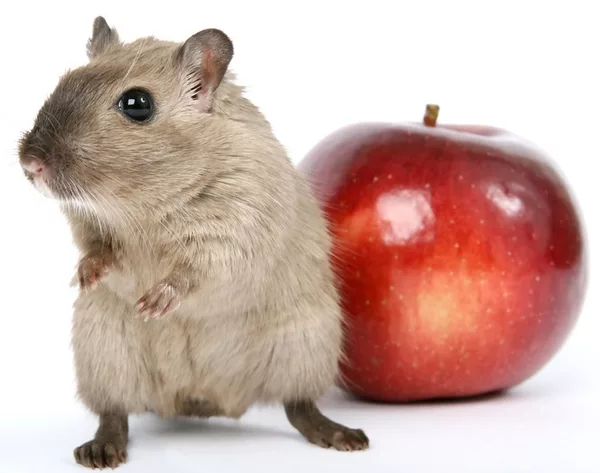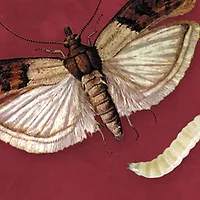Key Practices in the Fight Against Pests

As simple as it may sound, sanitation is a pest’s worst enemy. Food processing environments are filled with pests’ favorite things, but with a strong sanitation plan you can limit access to those things and start winning the battle against these unwanted invaders.
Pests, like any living thing, need three things to survive: food, water and shelter. It should be no surprise that food processing facilities are naturally susceptible to these food safety threats since they contain all three. Sanitation is therefore of the utmost importance. Any facility can attract numerous stored product pests like Indian meal moths and warehouse beetles, bot flies, cockroaches and rodents are also a threat. These pests could put your facility at risk for contaminated products, customer complaints and audits.
The good news is that preventing pest issues with sanitation is something you can start working on to improve today. If you establish standard practices and procedures early and are diligent about sticking to them, over time you can reduce the occurrence and severity of pest problems.
Sanitation should be a key part of your integrated pest management (IPM) program to help prevent pest activity before it occurs. Using tactics that include inspection, exclusion and monitoring in conjunction with sanitation before using chemical treatments allows for better overall management of pest issues. A good IPM program uses all the tools to minimize the occurrence of pests, minimize their impact and maximize the efficacy of treatments. IPM focuses on preventing issues and addressing them immediately once discovered to stay ahead of pests.
When developing or revising an IPM program, your pest management professional should conduct a thorough inspection to locate potential pest hot spots and conducive conditions in your facility. Then, they’ll work with you to create a customized IPM program focusing on your particular challenges. Because each facility will have different needs and there’s no one-size-fits-all solution, it’s important to meet with a pest control professional to customize your plan.
No matter what your facility’s specific challenges may be, there are several key practices you can always implement to protect your facility and your reputation as well as teach your team good pest control habits.
First Line of Defense—Your Employees
Discovering pest issues early on is going to be incredibly difficult if you employees aren’t taught to look for certain signs and be diligent about reporting them. When it comes to sanitation, every employee plays a key role. Not only is it important to establish a schedule for sanitation, but it’s also important that employees be adequately trained on the procedures, documentation and rationale for maintaining good sanitation.
Looking for quick answers on food safety topics?
Try Ask FSM, our new smart AI search tool.
Ask FSM →
To get your employees to “buy in” to the program, be sure to engage them early in the process. Educate them on what the pests are, what conducive conditions to look for, and how to report it.
Be sure that employees know the telltale signs for some of the most common pests. For example:
- Stored product pests might be found in raw ingredients, along the processing lines or around finished goods.
- Cockroaches might be seen in break rooms around refrigerators or vending machines.
- Flies like moist areas with organic buildup, so be sure to check drains and garbage bins for adults and larvae (maggots).
- Rodents will leave droppings and dark rub marks where they walk near floor-wall junctions, especially corners. They also love to chew on products, so be aware of gnaw marks on boxes and containers.
Make sure to have a pest sighting log and procedures in place for employees to report issues when they spot a pest or signs of pest activity. The pest sighting log should include details such as: time and date, location where pests were spotted, type (if known) and number of pests sighted, and any other observed signs of pest activity. If possible, collect a sample of the pest for identification by your pest management professional.
If you’re having a tough time getting employees on board, most pest management professionals offer free training sessions. It often helps to hear straight from the expert.
Sanitation—The Ongoing Battle
It doesn’t take a lot of food particles or moisture to allow pests the conditions they need to establish themselves. That’s why it takes diligence to reduce the access to food resources.
Clean regularly
You should have a master sanitation schedule that covers all areas of your facility. This will include daily, weekly, monthly and quarterly sanitation tasks and maybe even special shutdown sanitation protocols. Ensure that these tasks are being completed and documented. Your inspections should overlap with your sanitation schedules to verify that procedures are being followed. Don’t forget about employee areas like break rooms and locker rooms, and empower all employees to report all sanitation issues they may see.
Take out the trash
Whether it’s trash from production areas, trash in employee areas or outside trash, dispose of trash on a regular basis. Make sure to keep a lid on all garbage receptacles. Keep dumpsters away from the building if possible. And don’t forget to regularly wash out indoor trash bins so there is no buildup between the bin and the liner bag.
Drains
Drains can be both a sanitation issue and a possible entry point. Especially in areas with standing moisture, regularly clean drains with a foaming drain cleaner to prevent organic material from building up. For drains that are no longer used, or rarely used, consider capping or using a drain insert to prevent pests from harboring in those areas. Don’t forget drains in break rooms and bathrooms.
Exterior Sanitation
Sanitation is not only important inside, but outside your facility as well. Keeping the property around your building clean can drastically decrease pest pressure outdoors, keeping pests from moving indoors. Proper landscaping will help keep the premises pest-free.
- Make sure there is no loose trash around the outside including parking lots and outdoor employee areas.
- Maintain a vegetation-free border around the facility. Use rocks and/or gravel to prevent plant growth and to ensure water flows away from the structure.
- Trim vegetation and thin out thick bushes to eliminate hiding spots where insects, rodents and birds can find protection and thrive.
- Cut back trees away from the building to ensure branches don’t touch the facility—when they do, it creates an access point for pests. Keep all plants at least two feet away from the building.
- Watch out for standing water. Flies and other insects can breed in these areas, resulting in an increased risk of pests getting into a facility. Any places where water pools regularly will become a hot spot for pests, so ask your landscapers to create proper runoff to eliminate standing water.
While there are a variety of tactics you can implement to prevent pests, one of the most important things to remember is that regular sanitation will have a big impact on reducing overall pests populations and making them easier to deal with. This not only ensures the quality of your products, but can help reduce customer complaints and prepare your facility for the next audit. Regular inspections help minimize food and water sources for pests and identify potential problem areas. If you make it harder for pests to find one of their three needs—food, water or shelter—they can’t thrive. Simple as that.
Chelle Hartzer is Technical Services Manager for Orkin. She is a board-certified entomologist and provides technical support and guidance across all Rollins brands in the areas of operations, marketing and training. For more information, email mhartzer@rollins.com or visit Orkin.com/commercial.








